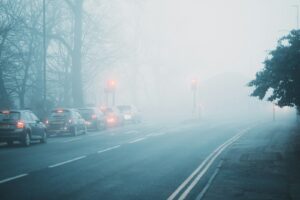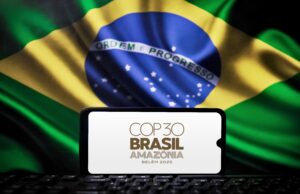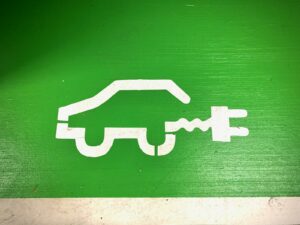With overwhelming evidence to show that the most disadvantaged in society bear the brunt of pollutants, despite contributing the least, Martin Guttridge-Hewitt explores the uneven impact of toxic air and how to help those most in need.
Nitrogen dioxide (NO2) and particulate matter (PM10 and PM2.5) are grave concerns when it comes to traffic emissions across the UK and beyond. Proven to cause respiratory infections, asthma, and chronic lung disease, research leading to panic has catalysed efforts to reduce concentrations of these and other pollutants in a bid to save lives.
These steps are understandably welcomed by air quality campaigners, but an uncomfortable truth remains. Air pollution is not evenly distributed, and its impact disproportionately affects minority ethnic and low income communities. Those most likely to live near busy arterial roads, motorways, and transport hubs.
Proximity to other pollution sources, like industrial sites, is also often too close for comfort. A comparative lack of green assets, such as parks and trees, compounds the situation. Research by The Runnymede Trust paints a vivid picture of this: 20% of the UK’s most deprived areas are home to one-third of its waste incinerators, with just 90 such facilities found in the wealthiest 20% of neighbourhoods. The organisation has identified ‘air pollution sacrifice areas’, predominantly home to impoverished and minority populations.
In November, the Mayor of London published damning evidence spotlighting the terrifying human cost. Half the city’s recorded childhood asthma hospitalisations between 2021 and 2022 were from Black, Asian and other minority ethnic groups. The fact that NO2 levels in these communities are on average 16 to 27% higher than majority white neighbourhoods is no coincidence.
‘We’re really interested in these social justice elements of the air quality story, the equity elements. Whether that’s income, car ownership, or which ethnicities are bearing the brunt,’ says Mike Childs, Head of Science Policy and Research at Friends of the Earth, which unveiled its own study looking at air pollution impacts on different demographics in September. In addition to other things, the work emphasised people most affected contribute least to the problem, with low vehicle ownership common among those on the front line.
‘People who suffer worst from air pollution are likely to be those that are also suffering from more extreme heat, because they’re less likely to have green space around them, and more likely to be in built up areas. So less space for the heat to escape and less space for the air pollution to escape,’ Childs continues. ‘So you’ve got these built environment realities, too. But the solutions can often be the same, as well. Solutions to climate change are about encouraging people to cycle and walk more in urban areas, and move to clean public transport, which should be electric – although that’s not a wholesale fix. These are things we need to do for climate, and also the things we need to do for air pollution.’
While this is patently true, sustainable transport modality is vital in protecting environment and atmosphere alike, the fact particular groups are more exposed to toxic urban air is a far more complex problem, with many still unwilling to acknowledge the causes. What’s abundantly clear, though, is empowerment and knowledge-sharing are effective in ensuring communities understand their rights.
‘How do you move from A to B, where B is clean air for the most disadvantaged? We know in policy terms there are steps. You can begin by getting rid of some of the most polluting vehicles by putting in Clean Air Zones, Low Traffic Neighbourhoods, or School Streets. Ultimately, though, this is about politics. How do those people get their voices heard more? I think that’s about trying to bridge gaps, establishing integrated connections,’ says Childs.
‘That means working with people who are within those communities already – maybe food banks, those working with a whole range of other issues including racial equality, and saying: ‘There’s a connection here, let’s work together,’ he continues, explaining Friends of the Earth wants to ally with people historically underrepresented in environmental discussions. ‘We can’t just march in… [But] we can bring analysis, information, solutions to include in those conversations. We’re committed to doing that at a local level. Hopefully, we’ll see more coming together and recognition this is a coherent agenda – social justice and the environment aren’t separate issues.’
Established in 2020 by teenagers predominantly from minority ethnic and working class backgrounds, Choked Up is a grassroots organisation committed to action on air pollution. From on-the-ground campaigns in Lewisham, Whitechapel and Brixton – fake road signs erected with the warning ‘Breathing Kills: Pollution Zone’ – to attending and speaking at major environmental events like COP26 in Glasgow and C40 in Buenos Aires, they talk from experience as vulnerable people, homes standing in air pollution hot spots, their developing lungs more susceptible to damage than those of adults.
Co-Founder Anjali Raman-Middleton agrees education is essential to help people in the worst areas for air quality. ‘I think many are quite unaware, those in the communities that I’ve been working with and the communities I’m from don’t often know they can protect these rights in a legal way, or understand what they are entitled to. This side of it, nobody ever tells you about. And it’s not immediately obvious, which makes it hard. I also think a lot of people just aren’t thinking about what they’re breathing in. They’re so used to traffic, but not making the connection.
‘Something that has come up, quite a lot actually, is a need for youth engagement, like climate youth panels in cities, so young people can actually influence policy within their area about things like climate change or air pollution,’ she continues when asked for messages to those in power, regionally and nationally. ‘What has been changing is not necessarily engagement, but the politicians’ desire to look as if they are engaging and interacting with youth. It’s like people are now seeking out youth activists, especially in the climate sphere, and having conversation with them, meeting them, but not actually engaging with them properly or letting them into important spaces. That needs to change.’
Dr Nadine El-Enany is a Reader in Law and Co-Director for Research on Race and Law at London’s Birkbeck School of Law. Her career to date has involved researching and working around immigration, asylum, criminal justice and protest-related legislation. As per a recent lecture at UCL in which she introduced evidence around health inequalities, her current focus is the racialised effects of air pollution, which she considers a government-sanctioned crime. She also says the legal system isn’t currently designed to properly hold parties accountable for verdicts like unlawful death, because tangible regulatory or legal changes rarely seem to be the end result.
‘[Air pollution] is a sort of slow form of violence – cumulative exposure to poison in the air leading to one’s deaths from what may be described, much later in life or at some point in life, as an underlying health condition like asthma. Well, OK, but what caused that asthma?,’ she asks rhetorically. ‘I think it’s an important question because if what we’re interested in is preventing these deaths, we need to acknowledge the causes.
‘It’s not enough to say: ‘this individual died of asthma’, or ‘this individual died of overexposure to air pollution’. That doesn’t really account for why that particular person was made vulnerable to being disproportionately exposed to pollution, and that’s why it’s a question of health inequalities, a term defined as preventable differences in health outcomes between groups separated by factors like geography, socio-economic status or race,’ El-Enany continues. ‘If you’re Black, or from a working class background, you are most likely to live in an area where you are disproportionately exposed [to air pollution].’
El-Enany is keen to express admiration and appreciation for the efforts of Rosamund Kissi-Debrah, whose nine-year-old daughter, Ella, tragically became the first British person to have air pollution listed on their death certificate. The product of years spent campaigning for amendments to the initial coroner’s report, those efforts have directly fed into the Clean Air Bill, or Ella’s Law, which recently passed the House of Lords Committee Stage.
Our toxic atmosphere is now recognised as fatal, meaning policymakers must step up. But what lies at the root of its uneven impact often remains ignored. For El-Enany, and Kissi-Debrah, who has not stopped campaigning even after the updated verdict, only when these causes are approached head on will real justice be served.
‘The coroner doesn’t look at structural inequalities, histories of colonialism, transatlantic slave trade,’ says El-Enany. ‘They don’t look at how people come to find themselves in the conditions they find themselves in today. They don’t think about how race might affect where you live, whether you might be more likely to die of asthma because you breathed dangerous levels of pollution.’
Public awareness of how these communities have consistently been systemically failed is arguably rising, with Grenfell Tower, Covid-19’s uneven death toll, and November’s ruling two-year-old Awaab Ishak died due to conditions at his mould-infested Rochdale home reiterate this point and are impossible to forget. Now those with power need to respond by reaching out, listening to, and working with those that clearly need assistance – the only way to champion genuine long-term solutions.
This article appeared in the December 2022 issue of Air Quality News. You can read the full magazine below.
Images: Daphne Lamens / Uta Scholl / Chris Johnson

















Leave a Reply